 |
 |
Our enthusiastic and extremely knowledgeable perennials team is here to answer your questions and help you choose the best perennials for your situation. There’s always something in bloom for sun, shade, butterflies, birds or deer resistance as well as a variety of bulbs for your space.
Stroll through our time-tested favorites and introduce yourself to the newest varieties. We garden with perennials too; we love them and it shows!
|
39 found, showing page 1 of 3
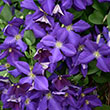
Height: 10 feet
Spread: 24 inches
Sunlight: full sun
Hardiness Zone: 3a
Other Names: Jackman's Clematis
Description:
The granddaddy of clematis, more popular than any other variety and for good reason; this variety features endless waves of rich velvet-blue flowers throughout the season; tough, hardy and thrives with neglect
Ornamental Features:
Jackmanii Clematis features showy royal blue star-shaped flowers with white anthers at the ends of the branches from mid summer to early fall. It has green deciduous foliage. The compound leaves do not develop any appreciable fall color.
Landscape Attributes:
Jackmanii Clematis is a multi-stemmed deciduous woody vine with a twining and trailing habit of growth. Its average texture blends into the landscape, but can be balanced by one or two finer or coarser trees or shrubs for an effective composition.
This is a relatively low maintenance woody vine. It is a Type 3 clematis; each spring it should be pruned back to within a few inches of the ground, as it flowers on new wood of the season. It is a good choice for attracting hummingbirds to your yard. It has no significant negative characteristics.
Jackmanii Clematis is recommended for the following landscape applications:
- Accent
- Hedges/Screening
- General Garden Use
- Container Planting
Planting & Growing:
Jackmanii Clematis will grow to be about 10 feet tall at maturity, with a spread of 24 inches. As a climbing vine, it tends to be leggy near the base and should be underplanted with low-growing facer plants. It should be planted near a fence, trellis or other landscape structure where it can be trained to grow upwards on it, or allowed to trail off a retaining wall or slope. It grows at a medium rate, and under ideal conditions can be expected to live for approximately 20 years.
This woody vine should only be grown in full sunlight. It does best in average to evenly moist conditions, but will not tolerate standing water. It is not particular as to soil type or pH. It is highly tolerant of urban pollution and will even thrive in inner city environments. Consider applying a thick mulch around the root zone in both summer and winter to conserve soil moisture and protect it in exposed locations or colder microclimates. This particular variety is an interspecific hybrid.
Jackmanii Clematis makes a fine choice for the outdoor landscape, but it is also well-suited for use in outdoor pots and containers. Because of its spreading habit of growth, it is ideally suited for use as a 'spiller' in the 'spiller-thriller-filler' container combination; plant it near the edges where it can spill gracefully over the pot. It is even sizeable enough that it can be grown alone in a suitable container. Note that when grown in a container, it may not perform exactly as indicated on the tag - this is to be expected. Also note that when growing plants in outdoor containers and baskets, they may require more frequent waterings than they would in the yard or garden.

Massive clusters of vibrant, magenta flowers bloom profusely in summer. Vigorous grower. USDA 4-11

Large white ruffled flowers with a red center and blush pink edges. Upright, shrub-like. USDA 4-9
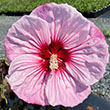
White dinner plate sized flowers with deep pink veining and a large eye. USDA 4-9
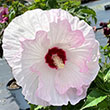
Large white ruffled flowers with a red center and blush pink edges. Upright, shrub-like. USDA 4-9
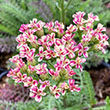
Carefree, compact, early-flowering yarrow with vibrant blooms and fern-like foliage. USDA 4-9
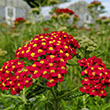
Cherry-red, gold centered flowers, later fading to light pink and creamy yellow. Spreading fern-like foliage. USDA 3-8

Compact with fern-like foliage and lemon to mustard yellow blooms. Blooms early summer to early fall. USDA 4-9
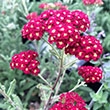
Rich strawberry red flowers with a yellow eye atop feathered foliage with a robust compact habit. USDA 3-8
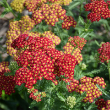
Height: 3 feet
Spread: 3 feet
Sunlight: full sun
Hardiness Zone: 2b
Description:
A lovely, fast growing perennial with an upright habit; featuring ferny green leaves and peach, orange and yellow colored blooms during the summer months; perfect addition to garden beds, borders and fresh cut arrangements
Ornamental Features:
Terra Cotta Yarrow is bathed in stunning harvest gold flat-top flowers with buttery yellow overtones at the ends of the stems from early to late summer. The flowers are excellent for cutting. Its attractive tomentose ferny leaves remain grayish green in color throughout the season.
Landscape Attributes:
Terra Cotta Yarrow is an herbaceous perennial with an upright spreading habit of growth. It brings an extremely fine and delicate texture to the garden composition and should be used to full effect.
This is a high maintenance plant that will require regular care and upkeep, and is best cleaned up in early spring before it resumes active growth for the season. It is a good choice for attracting bees, butterflies and hummingbirds to your yard, but is not particularly attractive to deer who tend to leave it alone in favor of tastier treats. Gardeners should be aware of the following characteristic(s) that may warrant special consideration;
- Spreading
- Self-Seeding
Terra Cotta Yarrow is recommended for the following landscape applications:
- Mass Planting
- Border Edging
- General Garden Use
- Groundcover
- Naturalizing And Woodland Gardens
- Container Planting
- Planting & Growing
Terra Cotta Yarrow will grow to be about 3 feet tall at maturity, with a spread of 3 feet. It grows at a fast rate, and under ideal conditions can be expected to live for approximately 10 years. As an herbaceous perennial, this plant will usually die back to the crown each winter, and will regrow from the base each spring. Be careful not to disturb the crown in late winter when it may not be readily seen!
This plant should only be grown in full sunlight. It prefers to grow in average to dry locations, and dislikes excessive moisture. It is considered to be drought-tolerant, and thus makes an ideal choice for a low-water garden or xeriscape application. It is not particular as to soil pH, but grows best in poor soils. It is highly tolerant of urban pollution and will even thrive in inner city environments. This particular variety is an interspecific hybrid. It can be propagated by division; however, as a cultivated variety, be aware that it may be subject to certain restrictions or prohibitions on propagation.
Terra Cotta Yarrow is a fine choice for the garden, but it is also a good selection for planting in outdoor pots and containers. With its upright habit of growth, it is best suited for use as a 'thriller' in the 'spiller-thriller-filler' container combination; plant it near the center of the pot, surrounded by smaller plants and those that spill over the edges. It is even sizeable enough that it can be grown alone in a suitable container. Note that when growing plants in outdoor containers and baskets, they may require more frequent waterings than they would in the yard or garden.
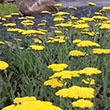
Clumping, compact hybrid with fern-like, aromatic, silvery foliage. Long-lasting, bright lemon-yellow flowers. USDA 3-8
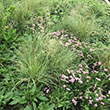
Clustered rose pink flowers that age to a soft creamy pink. Prefers well-drained soils. USDA 3-8
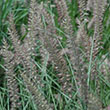
Dark, smoky rose-purple flower spikes. Deep green arching foliage. USDA 5-8
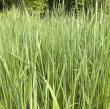
Height: 5 feet
Spread: 32 inches
Sunlight: full sun, partial shade
Hardiness Zone: 3a
Other Names: Feather Reed Grass
Description:
Dramatic red-copper plumes are eye catching during the early to mid summer months; a cool weather performer that looks wonderful in fresh or dried flower arrangements, borders or garden landscapes; heat tolerant and low maintenance
Ornamental Features:
Karl Foerster Reed Grass is primarily grown for its highly ornamental fruit. The tan seed heads are carried on showy plumes displayed in abundance from late summer to late winter. It features bold plumes of brick red flowers with coppery-bronze overtones rising above the foliage in mid summer. Its grassy leaves are green in color. The foliage often turns tan in fall. The gold stems can be quite attractive.
Landscape Attributes:
Karl Foerster Reed Grass is an herbaceous perennial grass with an upright spreading habit of growth. It brings an extremely fine and delicate texture to the garden composition and should be used to full effect.
This plant will require occasional maintenance and upkeep, and is best cut back to the ground in late winter before active growth resumes. It has no significant negative characteristics.
Karl Foerster Reed Grass is recommended for the following landscape applications:
- Vertical Accent
- Mass Planting
- General Garden Use
- Groundcover
- Naturalizing And Woodland Gardens
- Container Planting
Planting & Growing:
Karl Foerster Reed Grass will grow to be about 4 feet tall at maturity, with a spread of 32 inches. It tends to be leggy, with a typical clearance of 1 foot from the ground, and should be underplanted with lower-growing perennials. It grows at a medium rate, and under ideal conditions can be expected to live for approximately 10 years. As an herbaceous perennial, this plant will usually die back to the crown each winter, and will regrow from the base each spring. Be careful not to disturb the crown in late winter when it may not be readily seen!
This plant does best in full sun to partial shade. It is very adaptable to both dry and moist locations, and should do just fine under typical garden conditions. It is not particular as to soil type or pH. It is highly tolerant of urban pollution and will even thrive in inner city environments. This particular variety is an interspecific hybrid. It can be propagated by division; however, as a cultivated variety, be aware that it may be subject to certain restrictions or prohibitions on propagation.
Karl Foerster Reed Grass is a fine choice for the garden, but it is also a good selection for planting in outdoor pots and containers. With its upright habit of growth, it is best suited for use as a 'thriller' in the 'spiller-thriller-filler' container combination; plant it near the center of the pot, surrounded by smaller plants and those that spill over the edges. It is even sizeable enough that it can be grown alone in a suitable container. Note that when growing plants in outdoor containers and baskets, they may require more frequent waterings than they would in the yard or garden.
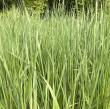
Upright. Pink-purple feathery summer blooms. Prefers moist soils. Tolerates clay and sandy soils. USDA 5-9
39 found, showing page 1 of 3













